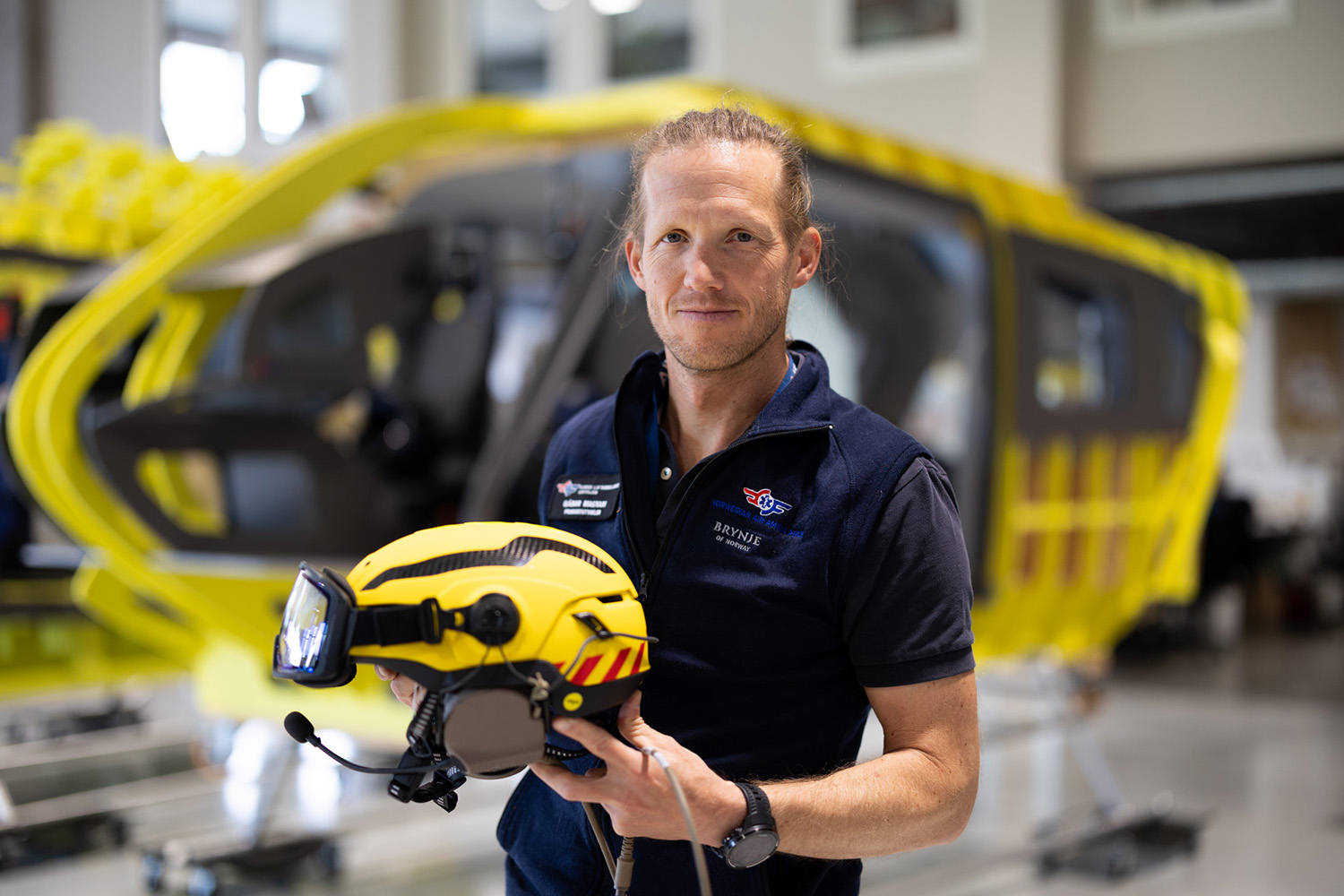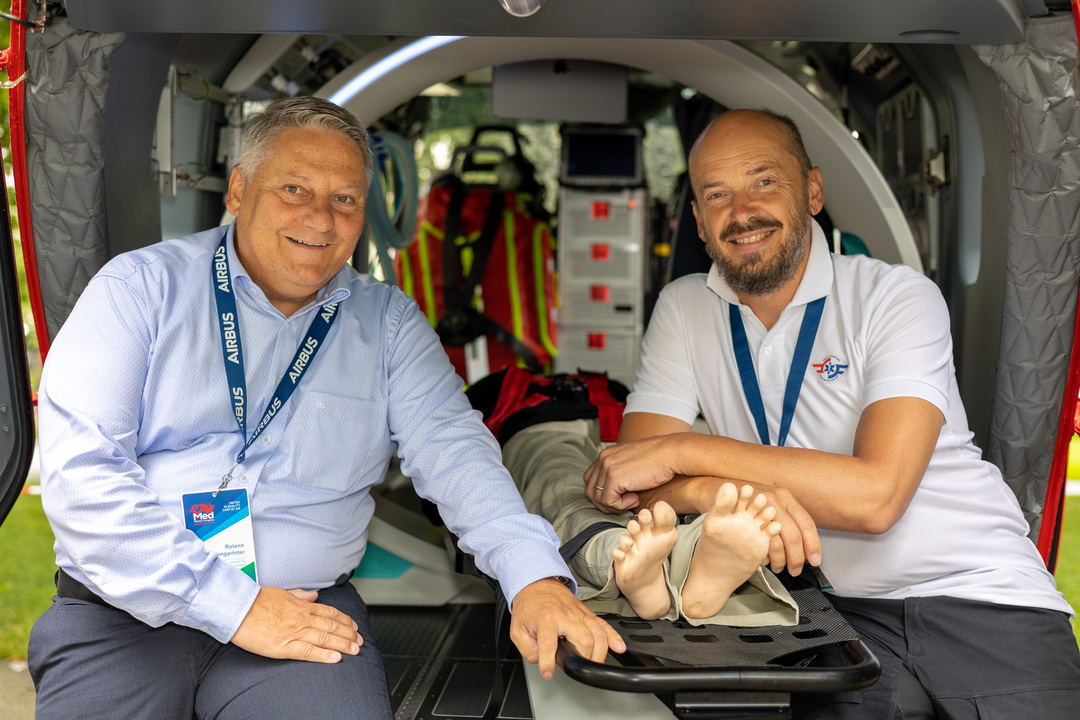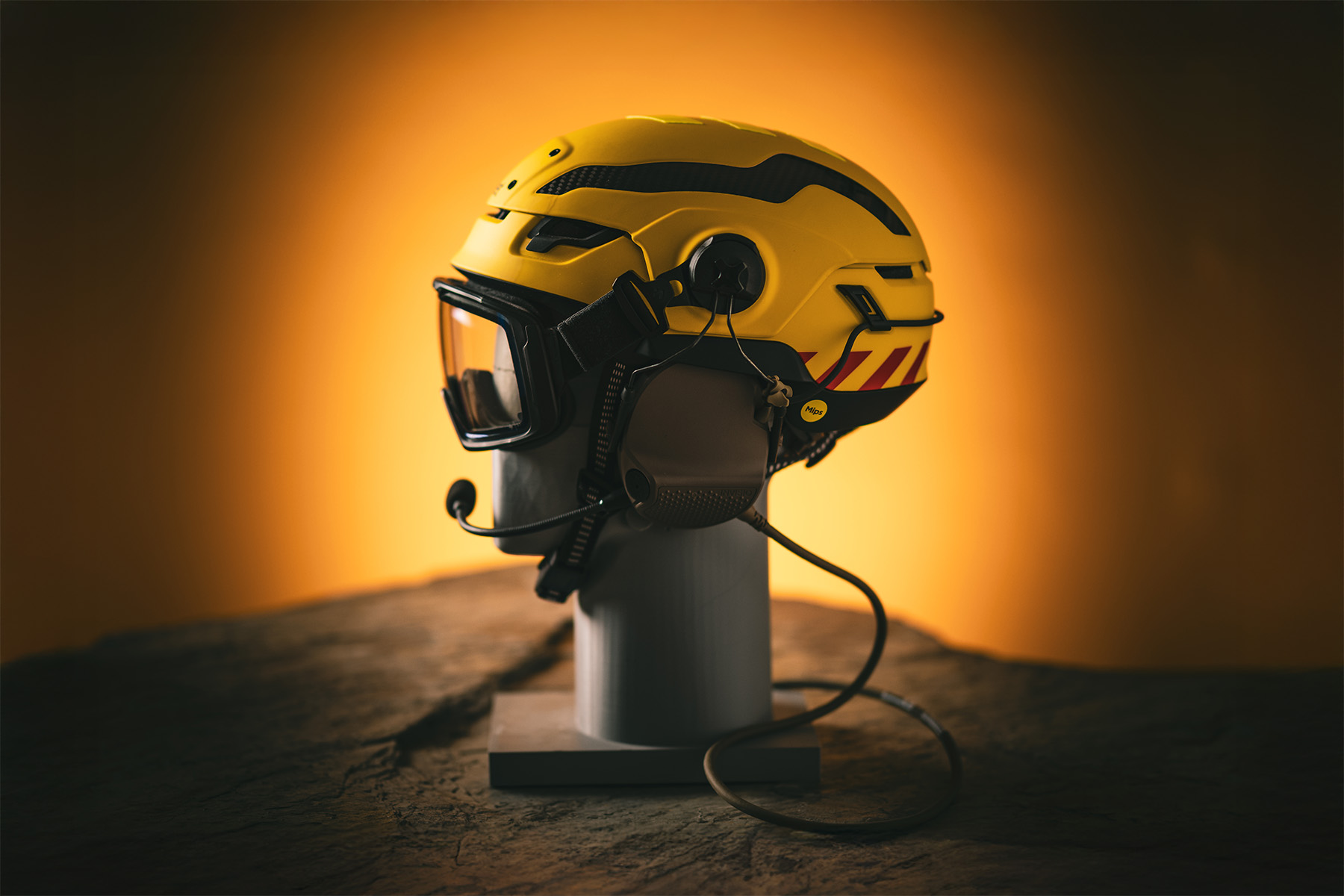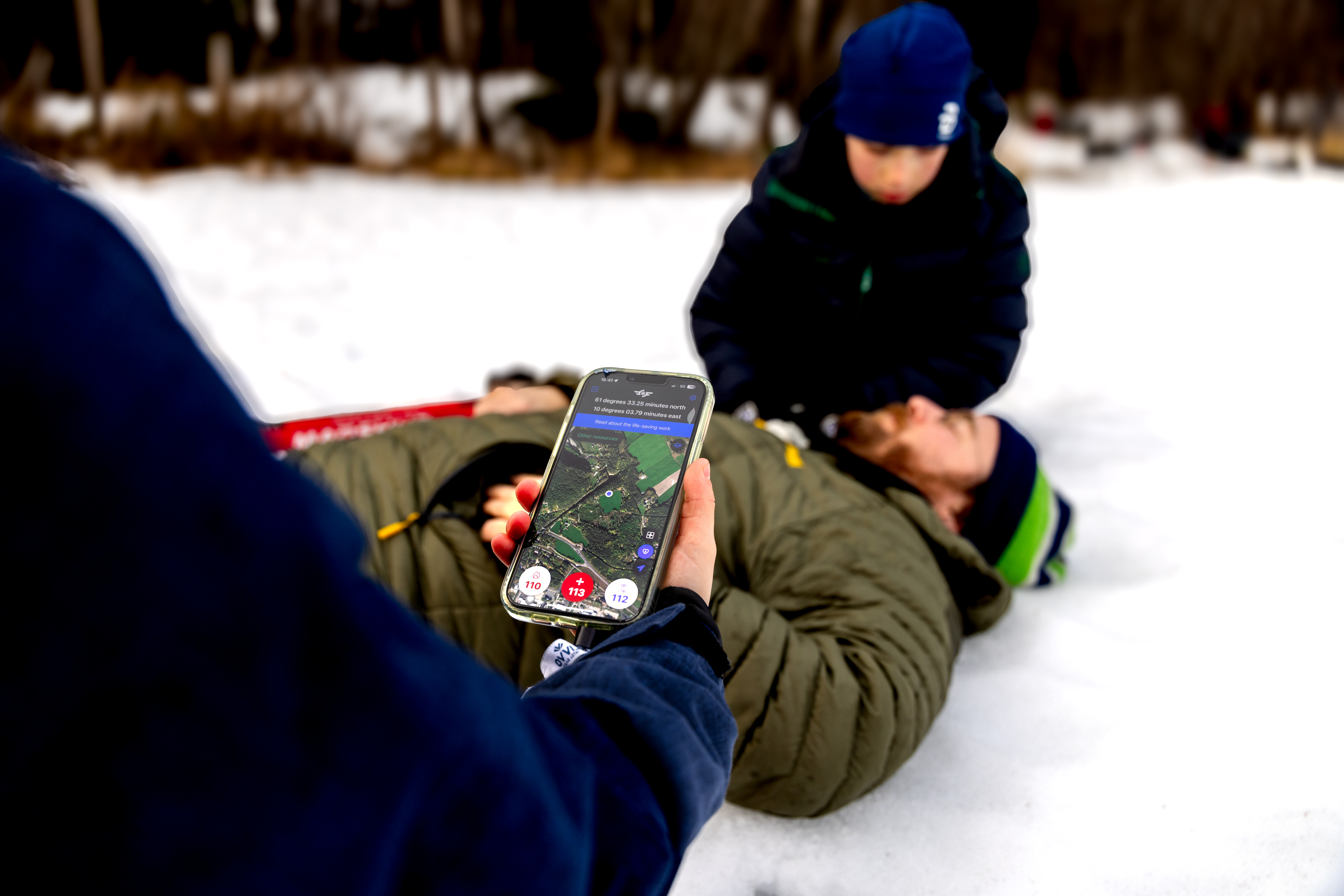There is always room for improvement – even in a service as advanced as the Helicopter Emergency Medical Service (HEMS). The crews of Norwegian Air Ambulance Helicopters, our subsidiary, know the service inside out. They are therefore our most important innovators. In close collaboration with them and relevant industry partners, we challenge, test and develop solutions to ensure safer and more efficient HEMS missions.
HEMS Weather
Our extensive network of weather stations (HEMS WX) provides real-time imagery and data on flight conditions and obstacles across Norway, Denmark and Sweden. When used together with our pre-set flight corridors (PINS), they enable HEMS responses in weather otherwise unsuitable for aviation.
Optimising the Medical Cockpit
While the helicopter cockpit is optimised for flight operational efficiency and the pilots’ needs, the medical workspace has not traditionally been tailored to the same extent. To improve inflight patient care and the working conditions of medical staff, this project aims to change that. In close collaboration with manufacturers of both helicopters and medical interiors, the innovation includes optimising the makeup of what we call the medical cockpit.
Prehospital Brain Stroke Detection
Our brain stroke-related innovation is closely linked to our research, with the aim of early diagnostics to secure swift initiation of treatment prehospitally or at the nearest appropriate hospital.
In close collaboration with industry partners, we explore the possibilities of prehospital CT by helicopter, road ambulance, or remote Urgent Treatment Centres.
Our e-Stroke app guides ambulance personnel through the brain stroke assessment used by in hospital neurologists, catering for early detection and a shared situational understanding.
Equipment and Procedures
To improve safety and efficiency in rescue operations, the Norwegian Air Ambulance Foundation tests and develops advanced equipment and procedures. Our projects include a rescue helmet suitable for everything from mountain and river rescue to roadside incidents, next-generation flight suits for crew safety and comfort, and other specialised equipment and procedures.
Bystander and Patient Contact
Most emergency calls are made by nonmedical personnel like bystanders or the patient. To assess the incident, dispatch the appropriate emergency response, and assist till it arrives on scene, operators rely on communication with the caller.
In addition to showing the location of nearest Automated External Defibrillators, our emergency app Hjelp-113 sends the callers precise location to the operator. Its video call function eases situational understanding and assistance. We have furthermore developed an emergency chat solution to cater for callers with speech or hearing difficulties.





